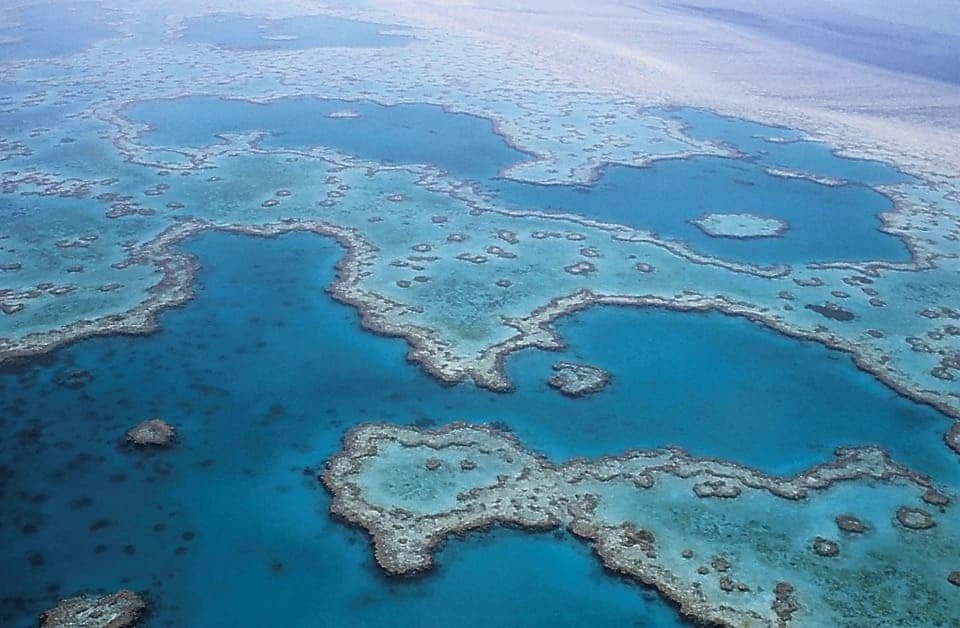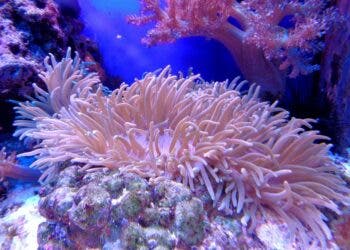
Extreme heat in 2016 caused far worse damage to the world’s largest coral system that initial surveys estimated. According to a new study published in Nature, roughly 29% of the 3,863 individual reefs that make up Australia’s Great Barrier Reef were affected by the abnormal warming. The consequences were dire: In some areas, up to 90% of the coral population died due to bleaching.
The Great Barrier Reef is 2,300 km long and can be seen from space, lounging off the coast of Queensland, Australia. Unfortunately, it’s dying. The main culprit is man-made climate change, which warms and increases the acidity of the waters. Although some think the effects of climate change are hazy and yet to rear their head, it has actually been affecting the reef for at least 20 years. A study that came out just last week found that the number of ocean heatwaves has risen by more than 50% since 1925, threatening to collapse marine ecosystems all over the world.
Previously, a 2016 study of 84 reefs along the Great Barrier Reef revealed that one-third of the coral reefs of the central and northern regions have died due to a huge bleaching event. Corals to the north of Cairns, which account for two-thirds of the Great Barrier Reef, are also massively affected, with 35% to 50% dead or dying. An estimated half billion people around the world directly depend on reefs for income from fishing and tourism. The Great Barrer Reef alone is thought to be worth $42 billion.
“If we fail to curb climate change, and global temperatures rise far above 2 °C [above the pre-industrial level], we will lose the benefits they provide to hundreds of millions of people,” said lead study author Terry Hughes, director of the coral-reef centre at James Cook University in Townsville, Australia.
Bleaching occurs when the ocean’s waters become too warm and expel the photosynthetic algae, called zooxanthellae, which live in a symbiotic relationship with the coral. Without the algae, the coral dies and seaweeds take over.

Certain species of coral are more vulnerable to bleaching than others, and the new study led by researchers at Australia’s ARC Centre of Excellence for Coral Reef Studies found more deaths of tabular and staghorn corals attributed to the 2016 marine heatwave. These corals are considered to be integral to the barrier reef’s structure.
In order to perform a more thorough analysis of the damage caused by the 2016 heatwave, researchers studied aerial photographs of the entire 2,300-km-long reef taken between March and November 2016. These were combined with underwater surveys of over 100 locations. The authors found more evidence of coral bleaching, which killed corals in two to three weeks from the first signs. The northern section of the reef, which is 700km long, was the worst off — nearly 50% of the coral cover in the reef’s shallowest areas was lost within eight months.
Not all corals were affected equally by the warming, with some being able to tolerate the stressful conditions better than other species. This led to a shift in the ecosystem’s landscape where, for instance, fast-growing species like tabular coral were replaced by simpler, slower growing varieties. The scientists warn, however, that as such warming events become increasingly more common and more intense, it will become very challenging for the coral to adapt — and not just around Australian water, but globally.
Last year, Australian scientists bred baby corals in an artificial environment and later moved them to some of the most damaged parts of the reef. Eight months later, the juvenile coral had survived and grown, lending hope that coral transplants can restore similarly damaged ecosystems, not just in the Great Barrier Reef, but around the world as well. However, this is just patchwork, at the end of the day.
Reefs can recover from bleaching in about 15 to 25 years — but that can only happen if the temperature and acidity of the waters drop. This entails mitigating climate change by reducing global greenhouse gas emissions. This is — the authors stress — the only way we can preserve the rich heritage of the Great Barrier Reef for future generations.






